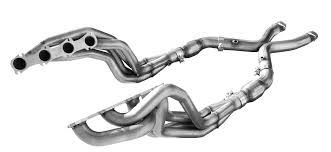If you want to tap into the power potential of your 1996 Mustang GT, headers are an essential performance mod. All of these aftermarket pieces not only improve exhaust flow but will also lead to a more efficient and better-sounding engine, making your classic muscle car that much of a road-driving powerhouse.
From seasoned veterans to first-time Mustang owners, knowing how 1996 mustang gt headers work along with selecting the correct set for your application is essential. In this complete guide, we shall examine the different types of headers and their benefits, how to establish them, and how they will take your driving knowledge to another level. Prepare to release the passion that lurks under the hooligan of your Mustang GT.
Understanding Headers
Headers are a part of the exhaust system that is responsible for moving gases out from the engine as quickly and efficiently as possible. Headers, as opposed to factory mustang manifolds which generally combine multiple exhaust outlets into one, have individual tubes that merge into a single outlet, allowing for low back pressure and better efficiency.
It improves exhaust flow, resulting in gains of horsepower and torque; the vehicle sounds more aggressive as well. Knowing the differences between shorty, long tube and unequal length headers will allow Mustang GT owners to select the appropriate component for their particular comfort and desired performance use case to take every aspect of the driving experience up a notch while also allowing you to get everything possible out of that V8 engine
Types of Headers for the 1996 Mustang GT
For the 1996 Mustang GT, there are three primary types of headers to consider: shorty headers, long tube headers, and unequal-length headers. Shorty headers provide a direct replacement for factory manifolds, offering improved performance without extensive modifications, making them ideal for street use.
Long tube headers, on the other hand, maximize exhaust flow and power gains by extending the pipes further down the vehicle but may require additional modifications to fit properly. Lastly, unequal-length headers create a unique sound and can enhance torque at specific RPMs, catering to enthusiasts seeking a distinctive driving experience. Each type offers unique advantages depending on performance goals.
Long Tube Headers
Long tubular headers are a common go-to for tuners squeezing the most out of their 1996 Mustang GT. In common with long tube headers, these bump the back pressure levels right down as they feature longer primary tubes that allow exhaust gases leaving the engine to do so more freely than in a shorter alternative. That design provides more horsepower and torque across the board — especially in the upper real estate of the tachometer, making them perfect for racing applications and spirited driving.
However, installation may require modifications to the exhaust system and can sometimes affect emissions compliance. Overall, long tube headers deliver impressive performance gains and a more aggressive exhaust note, transforming the driving experience for Mustang GT owners.
Unequal Length Headers
Unequal-length headers are designed to enhance performance and sound for the 1996 Mustang GT by creating a unique exhaust flow pattern. These headers feature pipes of varying lengths that help optimize exhaust scavenging, which can improve torque and horsepower at specific RPM ranges.
The distinct design not only contributes to better engine efficiency but also produces a more aggressive and distinctive exhaust note, appealing to enthusiasts seeking a standout sound. While they may not provide the same peak power gains as long tube headers, unequal-length headers offer a balanced performance upgrade, making them a popular choice for street and track applications alike.
FAQ’s
What are the main benefits of installing headers on a 1996 Mustang GT?
Installing titles improves exhaust flow, improves horsepower and torque, improves engine efficiency, and has a more forceful sound.
What types of headers are available for the 1996 Mustang GT?
The main types are short headers, long tube headers, and unequal-length headers, each
offering different levels of performance and fitment.
conclusion
One of the best ways to get your 1996 Mustang GT to the performance levels of a newer model is an upgrade to high-performance headers. Headers relieve exhaust flow and improve engine efficiency, increasing horsepower and torque while making your car more fun to drive.
Selecting the appropriate header type, and materials and matching them with your current exhaust system can lead to optimal results. From pure drag race domination to simply making your Mustang a bit more fun to drive, you can never go wrong with quality headers. Soak it all up and then live that life behind the wheel of your upgraded Mustang GT.

